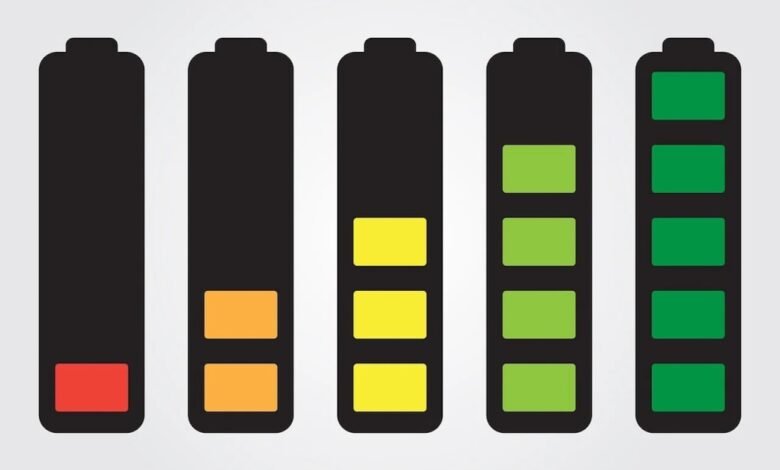Unlocking the Battery Revolution’s Hidden Challenge

▼ Summary
– The battery industry has experienced major failures with 11 bankruptcies and over $15 billion lost in the past year, hindering energy innovation in the U.S. and Europe.
– The core problem is not battery chemistry but the difficulty of integrating new chemistries into real-world products like drones, robots, and vehicles.
– Industry focus on finding a single “winning” chemistry has overlooked the critical need for integration infrastructure, such as battery management systems and voltage controls.
– Without solving integration challenges, promising battery technologies will remain stuck in development, delaying decarbonization and technological progress.
– The future of batteries depends on designing for flexibility and connectivity, enabling mass adoption of diverse chemistries to power a low-carbon future.
The battery industry faces a hidden crisis that threatens to stall the clean energy transition, with eleven major battery businesses declaring bankruptcy in just one year and wiping out more than fifteen billion dollars in investment. For the United States and Europe to compete globally in manufacturing electric vehicles, drones, robots, and modern energy grids, establishing a robust battery sector is non-negotiable. This urgency fueled massive funding for innovators like Natron and Northvolt, both of which collapsed despite significant backing.
Conventional wisdom points to faulty battery chemistry as the culprit for these failures. However, the real issue lies in the disconnect between advanced battery technologies and the complex reality of integrating them into commercial products. Bridging this gap is absolutely essential for any nation aiming to secure its economic standing and national security in the coming decades. Experts widely regard batteries as the fundamental building block of the “electric stack,” a core requirement for everything from modern military drones to consumer electronics and automated industrial systems.
For too long, the industry has been preoccupied with a misleading question: which specific battery chemistry will ultimately dominate the market? Researchers in labs worldwide chase breakthroughs in lithium-sulfur for its impressive energy density or sodium-ion for its safety and environmental benefits, achieving performance metrics that seem pulled from science fiction. Yet outside the controlled lab environment, these technological marvels often fail. They become impractical if they cannot be seamlessly incorporated into the drones, robots, vehicles, and gadgets they are meant to power. The singular focus on finding a single “winning” chemistry has overshadowed the more critical and difficult challenge: making every promising chemistry viable for real-world use.
This situation is analogous to a city filled with beautifully designed skyscrapers but lacking the roads to connect them. The battery world celebrates its architectural triumphs, the breakthrough chemistries, while neglecting the essential connective infrastructure. Each new chemistry comes with its own unique voltage and performance characteristics, making them far from plug-and-play solutions. While chemistry companies perfect the underlying science, predicting every potential end-use application is virtually impossible. The result is a costly and repetitive cycle of re-engineering electronics, chargers, and safety certifications for each new battery type. The science may be dazzling, but the integration economics often destroy the business case.
This is not merely an engineering inconvenience; it is a fundamental bottleneck holding back technological progress. Without solving the integration puzzle, fleets of autonomous delivery drones will remain grounded, data centers will struggle to decarbonize, and cities will continue to rely on polluting fossil fuels. The world’s most promising battery technologies risk being permanently confined to research papers and small-scale pilot projects, never achieving mass-market impact.
The next great leap in battery technology will not emerge from a new chemistry alone. It will arrive through a fundamental shift in how we approach connectivity and integration. Integration must be a primary design consideration, not an afterthought. It is the critical enabler that will allow a diverse array of batteries to power the products of the future. Advanced battery management systems, sophisticated DC conversion, intelligent controls, and dynamic voltage alignment are not minor technical details. They are the essential bridges that allow groundbreaking chemistries to cross over from the lab into the marketplace.
This shift in perspective, while subtle, completely rewrites the strategy for mass adoption. By moving beyond the question of “Which chemistry will win?” to asking “How can we make every chemistry usable?”, the industry can unlock a new paradigm. In this future, batteries are evaluated not only on their raw performance or environmental footprint but equally on their ability to connect effortlessly with any device or system. The future demands battery flexibility.
The stakes for solving this are monumental. Widespread electrification represents humanity’s most viable path toward a low-carbon future. The next wave of battery chemistries promises a way out with more abundant materials, a smaller carbon footprint, and superior performance. Yet these breakthroughs will remain academic if we do not prioritize flexible, universal integration from the start. Integration is not the mundane plumbing of the battery world; it is the revolution happening behind the scenes. Much like the internet, this unglamorous infrastructure will ultimately determine whether our innovations flourish or fade into obscurity.
If we succeed, the future will not arrive heralded by a single, triumphant battery chemistry. Instead, it will emerge as a rich network of interoperable possibilities. Within that network lies the genuine power to transform the promises of science fiction into the reality of everyday life.
(Source: ITWire Australia)